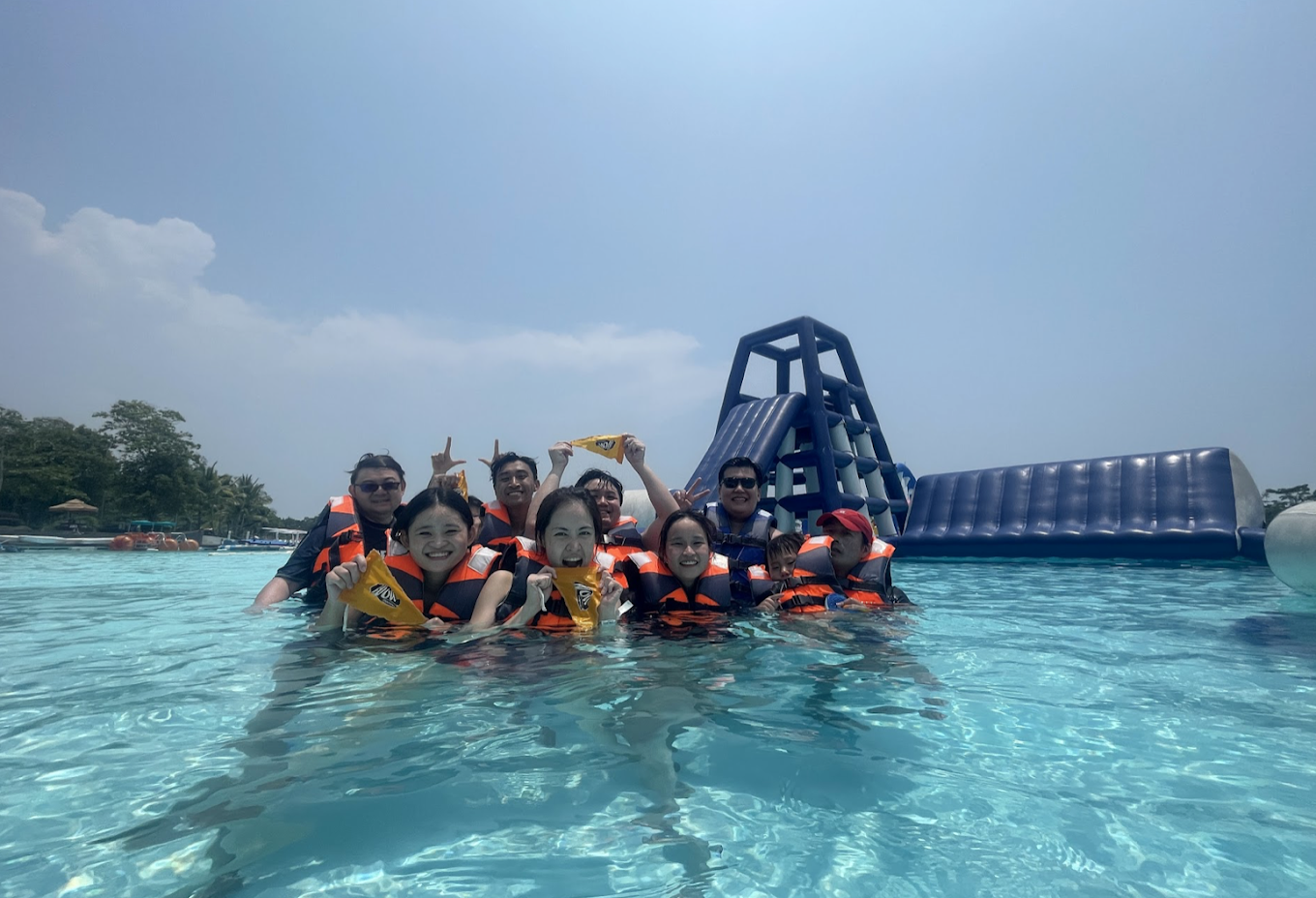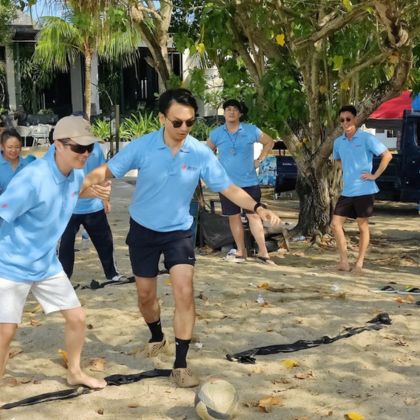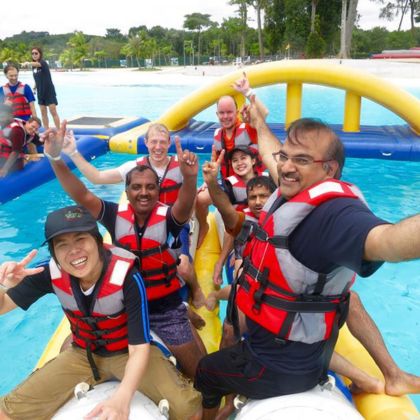
Corporate teams often face communication gaps, stagnating creativity, and low morale that undermine performance. A well-designed team building retreat addresses these challenges by combining targeted exercises, strategic goal setting, and immersive environments to enhance collaboration, innovation, and engagement. This guide covers the key benefits of corporate retreats, a step-by-step planning framework, curated activities for onsite and remote teams, methods to measure ROI, and reasons to partner with Onedteambuilding.com for customized, results-driven experiences.
What Are the Key Benefits of Corporate Team Building Retreats?
Corporate team building retreats are offsite events designed to align teams around shared objectives, improve interpersonal dynamics, and spark creative problem solving. By removing daily distractions, retreats foster deep engagement, reinforce company values, and deliver measurable improvements in performance.
How Do Retreats Boost Employee Morale and Engagement?
Retreats boost morale by creating an environment of recognition, trust, and shared achievement. When employees engage in collaborative challenges, they feel valued and motivated, driving sustained engagement back at the office. Higher engagement translates into lower turnover and stronger team cohesion.
Benefits of Team Building Retreats
Corporate team building retreats are designed to align teams around shared objectives, improve interpersonal dynamics, and spark creative problem solving. These retreats can boost employee morale and engagement by creating an environment of recognition, trust, and shared achievement. Higher engagement translates into lower turnover and stronger team cohesion.
HR News, The Benefits of Corporate Retreats and Team Away Days (2025)
This source discusses the benefits of corporate retreats, including boosting employee engagement and morale, which aligns with the article’s claims about the positive impacts of retreats.
In What Ways Do Retreats Enhance Communication and Collaboration?

Structured activities break down silos by requiring teams to share information, coordinate tasks, and solve problems together. For example, role-play simulations and trust exercises accelerate rapport building, leading to clearer dialogue and more effective cross-departmental collaboration.
Enhancing Communication and Collaboration
Structured activities break down silos by requiring teams to share information, coordinate tasks, and solve problems together. For example, role-play simulations and trust exercises accelerate rapport building, leading to clearer dialogue and more effective cross-departmental collaboration.
TravelPerk, 27 stats that prove corporate retreats are still a good idea (2023)
This source highlights that in-person communication is 34 times more effective than virtual alternatives, supporting the article’s emphasis on the benefits of retreats for enhancing communication.
How Do Retreats Drive Innovation and Strategic Alignment?
By introducing creative prompts and design-thinking workshops, retreats encourage out-of-the-box solutions that align with organizational goals. Facilitated strategy sessions at retreat venues translate innovative concepts into actionable roadmaps, ensuring teams move forward in sync with company vision.
How Can You Plan a Successful Team Building Retreat?
Planning a successful retreat combines clear objectives, logistical precision, and engaging content. Defining the purpose ensures each activity reinforces your strategic goals, while careful budgeting and venue selection set the stage for a seamless experience.
What Are the Essential Steps in Corporate Retreat Planning?
- Define clear objectives that align with company KPIs.
- Assemble a planning team with assigned roles for logistics, content, and facilitation.
- Create a detailed agenda balancing workshops, recreational breaks, and reflection sessions.
- Allocate budget for venue, facilitators, materials, and travel.
- Communicate expectations and outcomes to participants in advance.
These foundational steps establish a framework that guides all subsequent decisions and activities.
How Do You Choose the Right Venue for Your Team Retreat?
Selecting a venue balances accessibility, atmosphere, and available amenities. Venues range from beachfront resorts to mountain lodges—each offering unique settings that influence group dynamics and focus.
| Venue Type | Ideal Team Size | Key Attribute |
|---|---|---|
| Seaside Resort | 20–50 | Relaxation and brainstorming |
| Mountain Lodge | 10–30 | Adventure-driven challenges |
| City Conference Hub | 30–100 | Tech-enabled workshops |
Each option supports specific retreat goals, and choosing the ideal setting ensures maximum engagement and comfort.
How Should You Set Goals and Objectives for Your Retreat?
Goals should follow the SMART criteria—Specific, Measurable, Achievable, Relevant, Time-bound—to translate retreat insights into actionable outcomes. Examples include improving cross-team communication by 20 percent or generating three new product ideas within two days.
What Are Effective Team Building Activities for Corporate Retreats?

Effective retreat activities balance challenge, creativity, and reflection to achieve desired outcomes. Activities should target collaboration, leadership, problem solving, and resilience in environments that energize participants.
Which Outdoor Activities Foster Team Collaboration and Adventure?
Outdoor challenges push teams beyond comfort zones, fostering trust and resourcefulness. Examples include ropes courses, orienteering scavenger hunts, and group kayaking expeditions.
| Activity | Collaboration Level | Adventure Factor |
|---|---|---|
| High Ropes Course | High | Extreme |
| Orienteering Relay | Medium | Moderate |
| Group Kayaking | High | Moderate |
Outdoor Activities for Team Building
Outdoor challenges push teams beyond comfort zones, fostering trust and resourcefulness. These activities build camaraderie under pressure and create lasting shared memories that carry into the workplace.
MIT Endicott House, The Science Behind Team Building: How Outdoor Activities Foster Collaboration & Leadership (2018)
This source discusses how outdoor activities foster collaboration and leadership, which supports the article’s claims about the benefits of outdoor team-building activities.
What Indoor Workshops and Games Enhance Teamwork?
Indoor workshops use creative problem solving and role playing to strengthen communication skills and strategic thinking. Examples include escape-room simulations, collaborative art projects, and business case puzzles.
- Escape-room simulations encourage teams to decode clues and allocate resources under time pressure.
- Collaborative art projects involve designing a group mural that reflects company values.
- Business case puzzles challenge cross-functional teams to develop sustainable solutions within constraints.
Each workshop sharpens collective reasoning and fosters a sense of shared achievement.
How Can Remote and Hybrid Teams Benefit From Virtual Retreat Activities?
Virtual retreats blend online collaboration platforms with facilitated challenges to engage distributed teams. Activities such as virtual escape rooms, live-poll icebreakers, and online hackathons bridge geographical gaps and strengthen connections.
By integrating remote-friendly exercises, organizations ensure all team members feel included, regardless of location, and reinforce a unified culture.
For inspiration on structured programs that elevate teamwork, explore Adventour’s quality team building programs.
How Do You Measure the Success and ROI of Team Building Retreats?
Measuring the Success and ROI of Team Building Retreats
Measuring ROI involves tracking both qualitative feedback and quantitative performance metrics. Clear evaluation criteria demonstrate the value of retreat investments and guide future improvements. Retreat effectiveness can be assessed using key performance indicators (KPIs) such as engagement, communication, innovation, and retention.
TeamOut, How to Calculate the ROI of a Company Retreat? (2025)
This source provides information on how to calculate the ROI of a company retreat, which supports the article’s discussion on measuring the success and ROI of team-building retreats.
What Key Performance Indicators Show Retreat Effectiveness?
Retreat effectiveness can be assessed using these KPI categories:
| Metric Category | Measured Attribute | Evidence of Impact |
|---|---|---|
| Engagement | Post-retreat survey scores | +25 percent satisfaction increase |
| Communication | Cross-team project completion | 30 percent faster delivery |
| Innovation | Number of new ideas generated | 5 concepts pitched per retreat |
| Retention | Voluntary turnover rate change | 10 percent reduction |
How Have Companies Achieved Measurable Results From Retreats?
Case studies reveal that companies have improved productivity by 20 percent, reduced conflict incidents by half, and launched new initiatives directly inspired by retreat workshops. By tying activities to specific KPIs, organizations realize clear business outcomes.
Why Choose AdvenTOUR for Your Corporate Retreat?
AdvenTOUR specializes in custom-designed retreats that integrate strategic facilitation, immersive activities, and measurable outcomes. Their expertise ensures each retreat addresses unique team challenges and delivers lasting performance gains.
What Customized Retreat Solutions Does AdvenTOUR Offer?
AdvenTOUR provides tailored programs including leadership development tracks, innovation workshops, and wellness-focused retreats. Each solution combines expert facilitation with data-driven design to meet specific organizational goals.
How Does Onedteambuilding.com Ensure Measurable Team Outcomes?
By embedding evaluation frameworks into every retreat—from pre-event diagnostics through post-retreat analysis—AdvenTOUR guarantees transparent ROI. Participants receive actionable insights, and leaders gain clear metrics to track progress.
Corporate teams seeking strategic, results-driven retreats can unlock their full potential by partnering with AdvenTOUR, where expert facilitation meets measurable impact.
